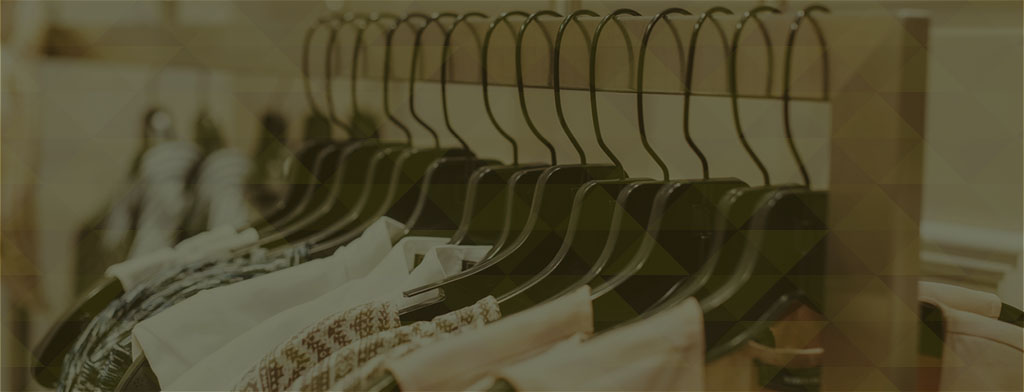Apparel Industry Travel and Big Data
Robert Sarver, Director of Solutions Architecture, Vistatec
What the Apparel Industry Can Teach Us About the Travel Industry and Big Data
Today I’d like to discuss a couple of business sectors that, at first glance, might not seem to have much connection. While reading two Bloomberg articles recently, I spotted an interesting connection between the apparel industry and the travel & leisure business. I’ll admit up front that clothing and travel aren’t the most obvious industries to be connected. One is physical; the other experiential. One is an essential; the other is a luxury. Let’s have a look then.
Apparel
Traditional clothing retailers are under pressure now, more than ever. A stroll in any shopping mall will show that retail apparel continues to draw shoppers, although store closings have been picking up pace in recent years. E-commerce giants like Amazon are among the usual suspects behind the demise of traditional retail apparel, and there’s no doubt that easy shopping and convenient shipping play a big role in competitive pressures and reduced margins. But that can’t be the entire story. Even clothing retailers that have gone online — or were originally launched as an online-only outlet — have struggled.
The culprit appears to be a change in attitude about the value and place of apparel for certain key demographics; i.e; millennials and knowledge workers in society. At one time, clothing was a sign of accomplishment or social achievement – people had one set of clothes for professional events, another for social events, and a third set for relaxing. But now those arenas of their lives have become blurred. Many companies have relaxed dress codes. Showing up at social events dressed down is considered to be dressed up.
Once you get beyond the physical need for warm, comfortable clothing, the secondary values that apparel used to provide — those same values that used to serve as social signals of success and achievement — just aren’t as attractive to younger buyers any longer. Clothing doesn’t express who they are or what they’ve accomplished; social media now performs that function. Buying a designer shirt or pair of shoes doesn’t have the same prestige value as posting a selfie at the hottest new restaurant in San Francisco’s SoMa district or Seattle’s Capitol Hill. This realignment of preferences shows up in how consumers are allocating their money. Spending on apparel has declined over the last 40 years, while spending on experiences – eating out, personal care, travel, etc. – has increased.
Travel
We are used to seeing cruise ships and tour buses full of tourists. They follow a guide in a straight line through a maze of local sites, pausing for a few moments to hear a lecture about the history or significance of a particular site. Some of these tours are fully guided; every moment of your day is mapped out. Others are a mixture of structured and free time. And some offer just the bare minimum: transportation and lodging only. Many of us have been on tours like these, and there’s no sign that model of pre-programmed tourism is going away anytime soon.
Instead, what the travel industry is seeing is the rise of a second kind of tourist. These travelers, many of them younger millennials, are planning their own vacations. They are booking flights, hotels and excursions online from their smartphones, and using the GPS in their smartphones to navigate the sites. They make their selections based on social media trends; is Iceland still the „must go“ destination this year? Or is it now South Africa? Travel industry specialists call these adventurers the FIT generation: „free, independent travelers“. But where did this new group of DIY travelers come from?

Many of these travelers fit the previous demographic: millenials and knowledge workers. But there’s also a significant contribution of tourists coming from the developing world, especially from South and East Asia. These are regions of the world that grew up with smartphones as their first entry portal to the internet. In such countries, they may have never owned a desktop or a laptop. They’ve seen them at school or where they work, but in their personal lives they’ve largely leapfrogged that stage in computer evolution and started with smartphones or tablets. They’ve never known a world without the internet or social media; they’re used to finding these things on their own.
The Connection
And this is the connection between apparel and travel: as this demographic has moved away from accumulating material things or clothing as rewards, they have moved toward accumulating experiences as their trophies. As their spending on apparel declines, that money is being redirected to travel. For these 21st-century tourists, travel has moved up the ranking to be as important – or more important – than personal possessions. Travel is now part of your personal brand. Travel is a sign of success. Travel is a form of humblebragging, hashtagging your achievements and garnering social media status. And because they are literate in mobile devices and social media, this demographic has emerged as a new class of traveller where everyone is an influencer and they have above-average expendable income.
Big Data
The travel industry has responded by employing big data to cater especially to this demographic. The travel industry begins with the baseline assumption that these travelers will be making up their own minds and doing their own research. In a world like that, how do you influence buyers? The answer has been highly personalized, micro-targeted information being pro-actively pushed to these travelers. Using each traveler’s unique preferences, previous vacation purchases, browsing history, and other data profile signals, the travel industry tries to anticipate your needs and push exactly the right information or offer to each traveler. Moreover, big data reacts in real-time to what you are doing. If your flight started 10 hours ago and it’s a long way to go, you may receive ads on your smartphone for meal coupons in your layover airport. If there’s a nasty weather system moving in on your tropical holiday vacation, you may suddenly find ads for indoor activities showing up in your social media feed. But big data doesn’t always work in favor of the traveler. Airlines and hotels may also raise their prices if they find out that a particular destination is trending on social media.
Travel is using big data to assist in microtargeting consumers. Can the apparel industry do the same? To a certain extent, this is already happening. Data mining companies are providing purchasing data to companies like Gap and Target that allows them to manage inventory better, avoid discounts and markdowns, minimize returned items, etc. But that is a B2B activity. What the travel industry is doing is taking that one step further, focusing on the B2C model, the actual consumer of the good or service. To be fair, this is probably easier for the travel industry than for apparel, because of what they are selling. Using big data to microtarget a traveler for a $300 helicopter excursion to the Alaskan glaciers is different from trying to target that same consumer for a $16 t-shirt. Another difference here is that the travel industry was digitized early on. By contrast, many apparel companies are still catching up to the requirements and potential of big data.
Group travel isn’t going away anytime soon. Likewise, retail apparel stores will still be around. But changes in customer preferences for a key target demographic – combined with big data – are changing the competitive landscape for both industries. There may be lessons here for everyone’s benefit.
Sources
https://www.bloomberg.com/graphics/2018-death-of-clothing/
http://fortune.com/2014/09/22/fashion-industry-big-data-analytics/
https://www.ft.com/content/621d20c0-7033-11e6-a0c9-1365ce54b926

